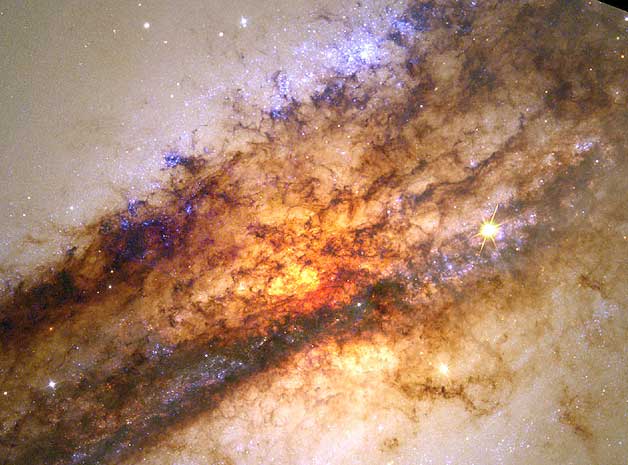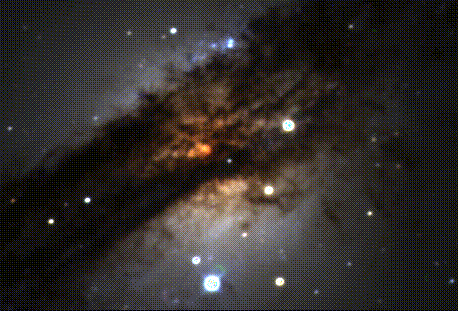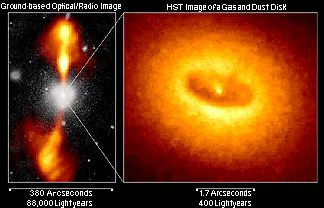Astronomy Picture of the Day
Discover the cosmos! Each day a different image or photograph of our fascinating universe is featured, along with a brief explanation written by a professional astronomer.
Posted on 10/17/2002 5:08:05 AM PDT by petuniasevan
Discover the cosmos! Each day a different image or photograph of our fascinating universe is featured, along with a brief explanation written by a professional astronomer.
Explanation: Almost lost in this cosmic jumble of stars, gas and dust is a faint but definite blue arc -- a stream of young stars whose formation was probably triggered as a small dwarf galaxy was torn apart approaching the giant elliptical galaxy Centaurus A. The 2,000 light-year long arc is revealed in the upper right corner of this processed color digital image, while the dense central region of Centaurus A is near the bottom. Star clusters that make up the blue arc are likely strung out along the incoming trajectory of the small galaxy and are estimated to be only 200-400 million years old. The remarkable result suggests that astronomers have identified a spectacular example of a kind of galactic cannibalism in progress, a process which is believed to contribute to the formation and evolution of large galaxies, including our own Milky Way. Over time, stars and star clusters in this stream should eventually disperse and merge with tumultuous Centaurus A. The image data was recorded with the four meter Blanco telescope at Cerro Tololo Inter-American Observatory.
APOD has featured Cen A as many times as any other astronomical object.
It's a fascinating galaxy and is close by, astronomically speaking.


8-12-02 composite image radio, optical light, x-rays

4-21-02 mosaic of Hubble images in red, green, blue light

2-02-02 composite optical, infrared, and radio lobe outlines traced

8-16-01 Chandra false-color x-ray image - see the jet?

10-28-99 composite optical and x-ray image (Chandra)

3-30-97 optical image Cerro Tololo Observatory
Some of these images were repeated over the years; the Hubble mosaic from 4-21 had been featured 3 times previously!
Enjoy!
What does "active galaxy" mean? Both the Magelanic Clouds (<1 million LY) and the Andromeda galaxy (2 million LY) are closer than Centaurus A.
Most galaxies, including our own, have black holes at the core which aren't getting enough material inflow to act like Cen A.
Here is a Hubble image of the inner workings of galaxy NGC 4261:

See the accretion disk? The hard x-rays and gamma rays it emits are astounding.
Even more energetic galaxies exist: we call them quasars.

Disclaimer: Opinions posted on Free Republic are those of the individual posters and do not necessarily represent the opinion of Free Republic or its management. All materials posted herein are protected by copyright law and the exemption for fair use of copyrighted works.